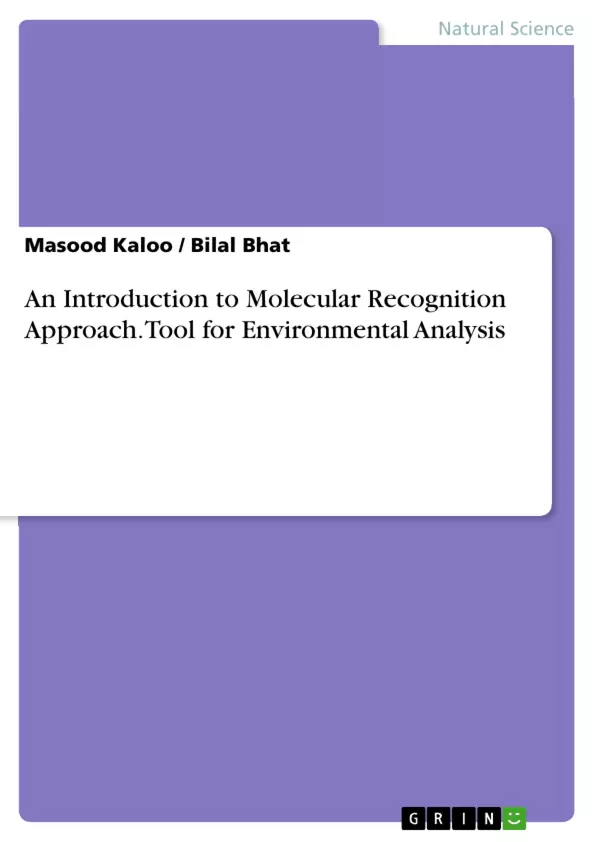Owing to the boom of Industrialization and modernization, diverse chemical entities have found entrance into various environmental components. Thus the continous monitoring of environment has been a crucial issue to the community. In this regard, development of novel technologies have urged a surge in the recent past. Among the various approaches proposed by the researchers, supramolecular chemistry has came up with intelligent state of art molecules know as " Receptors". These can be organic or inrganic moities which secreen the diverse chemical environments through visual display. They possess immense potential to overcome the diffculties associated with exisiting bulky and tedious strategies for environmental monitoring. In this book chapter, we have tried to present an introduction to this molecular approach for sensing of various chemical species in the form of caion and anions. The basic classification of the molecular receptor approach has been introduced. This has been further exaplained via the mechanism of intraction between molecule and analyte durring the course of sensng in diverse environmental matrices.
Inhaltsverzeichnis (Table of Contents)
- Introduction
- Molecular recognition and receptor approach
- Chemosensing
- Chemodosimetry
Zielsetzung und Themenschwerpunkte (Objectives and Key Themes)
This document provides an introduction to molecular recognition as a tool for environmental analysis. It explores the concept of molecular recognition, including its use in chemosensing and chemodosimetry, and highlights its significance in environmental monitoring and pollution control.
- The use of molecular recognition for environmental analysis
- The importance of monitoring environmental pollution
- The development of new approaches for environmental monitoring
- Molecular recognition and receptor approaches for analyte detection
- The advantages of chemosensing and chemodosimetry for environmental analysis
Zusammenfassung der Kapitel (Chapter Summaries)
- Introduction: This chapter introduces the topic of molecular recognition and its application in environmental analysis. It highlights the increasing problem of environmental pollution caused by various chemical species and emphasizes the need for monitoring and controlling pollution.
- Molecular recognition and receptor approach: This chapter describes the concept of molecular recognition, where specific interactions between receptors and analytes provide information about environmental contaminants at the molecular level. The chapter explains the mechanisms of receptor binding and the role of geometrical and electronic complementarity.
- Chemosensing: This chapter focuses on chemosensing, a strategy for molecular recognition involving reversible interactions between receptors and analytes. It explores two approaches: binding-site signaling and displacement. The chapter describes the advantages of chemosensing, such as reusability and real-time response.
Schlüsselwörter (Keywords)
The primary focus of this work is on molecular recognition as a tool for environmental analysis. Key concepts include chemosensing, chemodosimetry, receptor-analyte interactions, environmental monitoring, pollution control, and the development of new analytical approaches. The text explores the application of molecular recognition for detecting and characterizing various chemical species in different environmental systems.
- Quote paper
- Dr Masood Kaloo (Author), Bilal Bhat (Author), 2018, An Introduction to Molecular Recognition Approach. Tool for Environmental Analysis, Munich, GRIN Verlag, https://www.grin.com/document/447110



